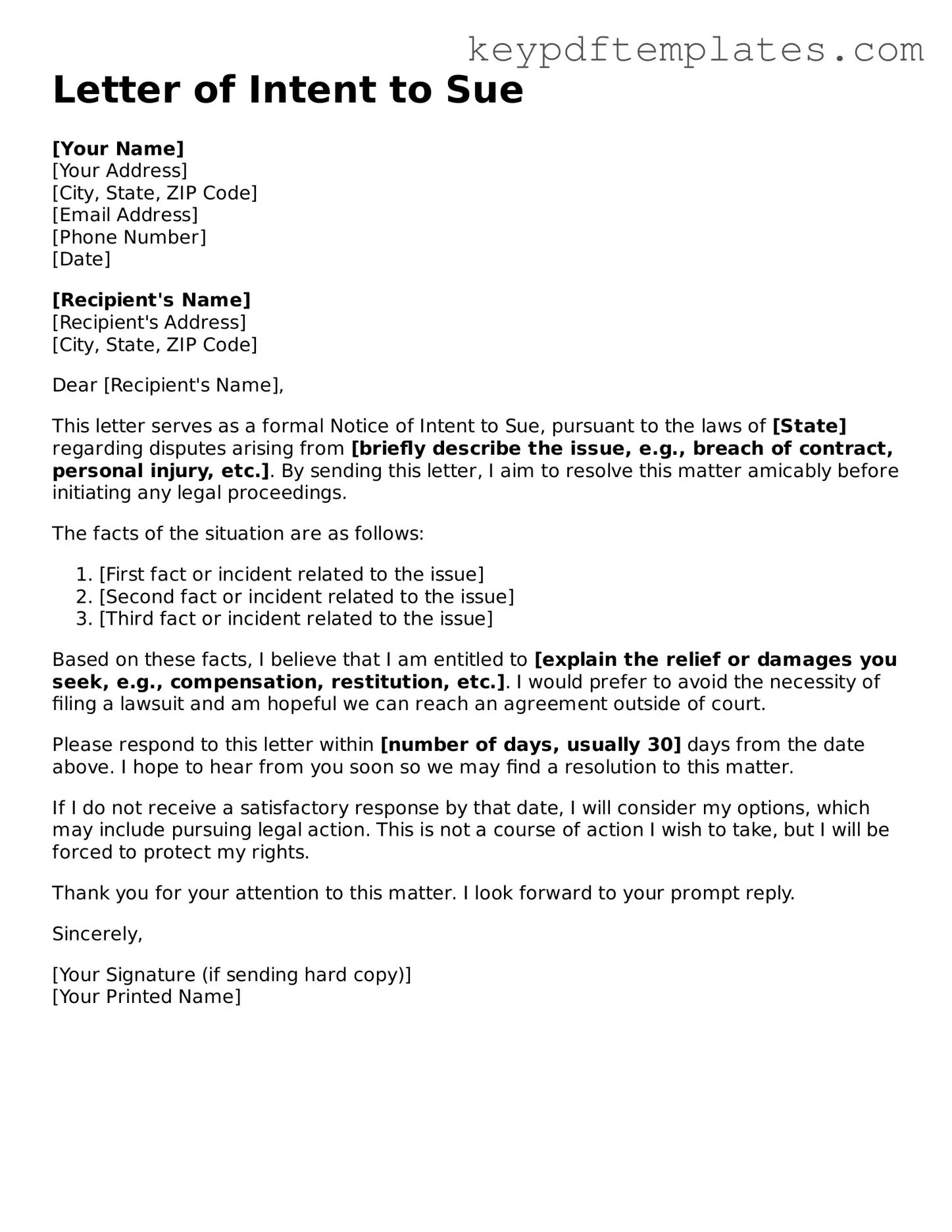Printable Letter of Intent to Sue Template
The Letter of Intent to Sue form is a crucial document that signals a party's intention to initiate legal action against another party. This form serves as a formal notice, providing the recipient with an opportunity to address the issue before litigation begins. Understanding its purpose and implications can help individuals navigate potential disputes more effectively.
Modify Document Online
